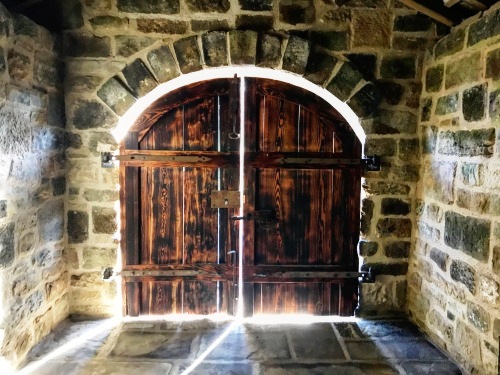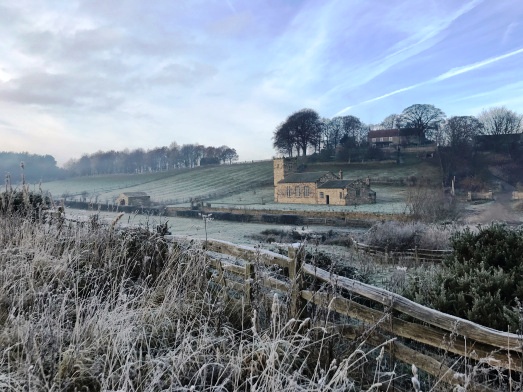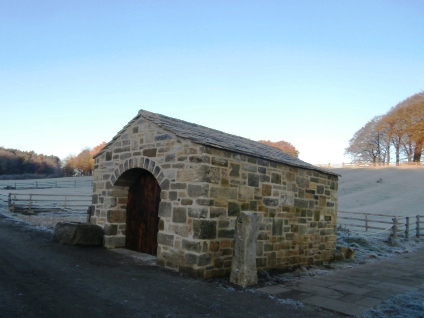The Hearse House
Credit to Beamish, The Living Museum of the North for kindly providing the source material for this page. Further details and links at the bottom of the page.

Britain’s Oldest Hearse
Marrick Priory was once home to a very rare object: probably Britain’s oldest hearse, built in 1828. The simple two-wheeled hearse left the Priory’s grounds in the 1960s. It was collected by the Beamish Museum from our stone-built Georgian Hearse House. This early and vernacular horse-drawn vehicle is exceptionally rare, and perhaps more so, as we are aware of its origin and history. We even have a record of its very first occupant, as the Marrick Priory registry records:
“1828 April 2nd, Mary widow of Thomas Hillary [a farmer], Lanehead House, aged 67, Hearse first time used.”
In October 2015 the Beamish Museum’s Buildings Team began work on constructing a replica Hearse House near St Helen’s Church. It was completed by December 2016. The Hearse now has a permanent home of its own and is on display to the public for the first time in decades.
The Main Structure
The main structure consists of stonework, joinery and a stone slab roof. The stone slab roof has been weather-proofed using a traditional method known as ‘torching’. This involves adding a coat of lime pointing to the underside of the roof slates, tiles or slabs to create a barrier against the elements, while still allowing the building to ‘breathe’.
The Georgian Grave Digger
The Beamish Collections team identified relevant objects from their collections which help give life to the building and tell the story of a Georgian grave digger. The project is now complete and the hearse is in situ.
The Interior
The Beamish team collected research on a number of similar buildings across the north of England in order to gain a better understanding of what the interiors of these buildings may have looked like in the Georgian period and what objects should be included to ensure historical accuracy. These buildings would all have had lime washed interiors. This was common for most vernacular buildings during that period, whether functional or domestic, due to the antibacterial properties of lime wash.
Further Information
Further photographs and more detailed information can be found by following the external links:






